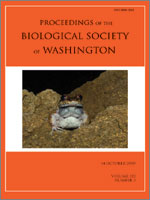Two starfish arm stumps that healed and did not regenerate the lost portion of the arm (a Linckia laevigata and an Asterias rubens) have a definite structural organization that suggests pattern regulation. Wound closure in these arm stumps was by symmetrical midline joining, like closing a book, whereas wound closure that precedes arm regeneration is by downward folding of the aboral surface. It is deduced from regeneration models that positional information in the arms of starfish has bilateral symmetry, and that the best-fit model for starfish arm regeneration is the distalization followed by intercalation model. As there is no discernable difference between regenerating arms and intact arms, it is proposed that intercalary gap-filling growth applies to both. Because in many starfish the arm is similar with itself throughout its length, it is argued that the positional gap between the terminal plate and the last-formed section of arm is never bridged, and that growth is indeterminate. It is proposed that distal signaling applies individually to each primary-plate series of the arm. Thus abrupt origins/losses of plate series in the arm can be explained by mutations that turn on/off distal signaling behind the terminal plate. Mutations could cause this signaling mechanism to function in more places than just behind the terminal plate, in which case it is expected that gene expression will be kaleidoscopic and affect every symmetrical part of the starfish. This can explain the origins of plate series that intercalate in various parts of the body wall. Mosaic evolution and recurrent appearance/loss of intercalary plates within and between echinoderm lineages are expected under this proposal.
How to translate text using browser tools
1 October 2009
Arm stumps and regeneration models in Asteroidea (Echinodermata)
Frederick H. C. Hotchkiss
ACCESS THE FULL ARTICLE
It is not available for individual sale.
This article is only available to subscribers.
It is not available for individual sale.
It is not available for individual sale.





